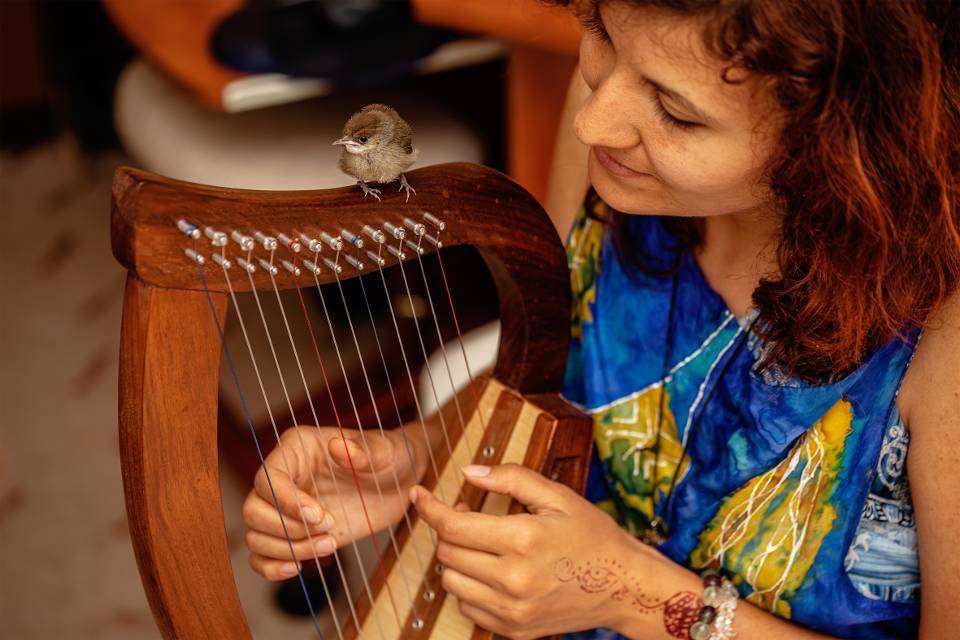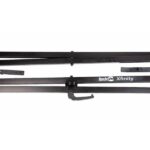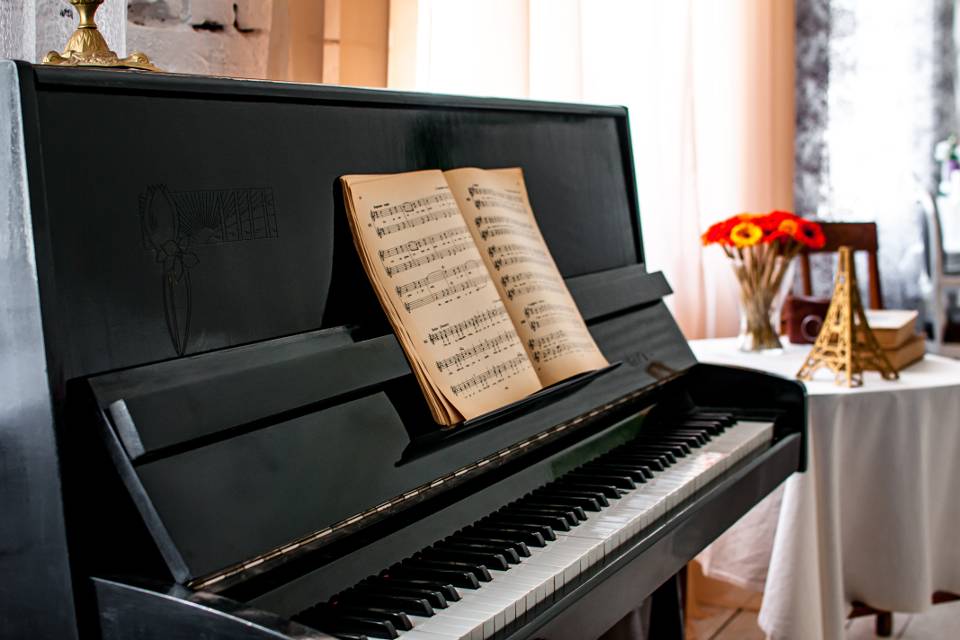Have you ever experienced Oboe? If yes, then you definitely have an idea that getting sound out of this is not child’s play. You blow with all your strength, and the sound is usually terrible.

But how do oboists manage to get masterpieces out of it, and why is the oboe so difficult to play?
This article will explain various reasons why the oboe offers such difficult challenges.
So whether you’re an aspiring oboist, a music enthusiast, or simply curious about the inner workings of this fascinating instrument, join us on this enlightening journey as we unravel the mysteries and complexities of the oboe.
Reasons Why the Oboe Is So Difficult to Play
Indeed oboe holds a unique position in the music world. But along with this, it has a notorious reputation for its difficulty to play.
From its intricate embouchure to its complex fingering system, mastering the oboe requires dedication, patience, and unwavering perseverance.
Below explained are the reasons that make the oboe difficult to play.
Unique Embouchure and Reed
Embouchure is the basis for playing any reed-containing musical instrument. And in the case of the oboe, this requires a more specified approach and skills.
Unlike other woodwind instruments, oboe embouchure requires a delicate balance of control, precision, and flexibility to produce its distinctive tone.
This involves strong craniofacial muscles and specific lips postures, ultimately challenging beginners to sail through the process.
In addition, the oboe sound is greatly influenced by its reed.
Contrary to the clarinet, the oboe has double the number of handmade reeds that require exceptional crafting, shaving, and shaping.
Thus this makes it difficult for oboists to understand the reed’s intricacies and master embouchure.
Ultimately learning the oboe’s embouchure and manipulating its reeds is an ongoing journey.
This requires high levels of patience and willingness to explore, which is difficult for everyone to maintain.
Complex Fingering System
The oboe’s demands for intricate finger movements are another factors that make it difficult to play as compared to the flute or clarinet.
Oboe’s finger coordination challenges are twofold. Firstly precise finger placement on keys is crucial for accurate intonation, and even minor mistakes can cause big variations in sound.
Secondly, swift and nimble finger movements are necessary to navigate intricate passages solo and maintain the pace required for orchestral performances.
Initially, this process can be overwhelming for any beginner.
The need for covering multiple holes simultaneously, minimum key spacing, and small finger holes further add to the complexity.
Achieving optimal skills in Oboe fingering requires continuous practice and time.
Individuals must develop muscle memory to add fluidity and accuracy to their finger movements.
Ultimately not everyone has this much time and perseverance to practice continuously.
Thus the complex fingering system is another reason that makes oboes difficult to play.
Breath Control and Air Support

Like other woodwind instruments, playing the oboe requires specific air pressure.
But in the oboe, due to its small aperture, the speed of air passing through the reed is comparatively slow.
Thus breath control and air support are fundamentals that can pose significant challenges for oboists.
The oboe reed demands perfect control over pressure, air speed, and direction of the airstream. Plus, the resistance offered by Reed further adds to the difficulty.
Additionally, the physical demands for breath support are also high.
Individuals need sustained breath over extended phrases, which often requires more stamina than other woodwind instruments.
For breath control and to develop effective air support, various dedicated training is required.
This includes diaphragmatic breathing, lung capacity expansion, and breath control exercise.
Ultimately these high breath control requirements make oboe not everyone’s cup of tea.
Health Issues in Playing Oboe
Besides other instrument-related reasons, health concerns in playing oboe are another big issue that makes the oboe difficult to play.
Repetitive lips posture and embouchure often come with jaw tension, Temporomandibular joints disorder (TMJ), and facial muscle fatigue.
Additionally, individuals playing oboe can suffer from certain respiratory problems.
This includes shortness of breath, hyperventilation, or even lightheadedness during intense playing sessions.
These health risk, in addition to other vulnerabilities like chances for noise-induced hearing loss (NHL) and allergic reactions initiated by reeds, adds further to the difficulty of playing the oboe.
Intonation Challenges
It is challenging to align with the oboe intonations required for play.
One common reason for this is Oboe’s specific acoustical properties and sensitivity to external factors like temperature and humidity.
These environmental factors make the instrument’s wooden body expand or contract and fluctuate the pitch.
Thus requiring constant monitoring to adjust embouchure, breath, and fingering accordingly.
Additionally, the oboe’s reed is manufactured of natural cane, which is also susceptible to temperature changes.
These variations eventually affect the reed tension and dimension, ultimately disbalance the pitch.
The above factors make it hard to counter intonation challenges, making the oboe a difficult instrument to play.
Dynamic Control and Expression

Shaping phrases and conveying emotions through the oboe’s sound requires a deep understanding of musical expression and artistry.
Unlike Piano or trumpet, the oboe offers a narrow dynamic range.
From delicate pianissimos to powerful fortissimos, it requires exceptional accuracy and skills.
To overcome these limitations, oboists must develop control over the instrument’s sound production.
As a result, oboists need to rely on subtle variations in embouchure, breath control, and finger technique to achieve the required sound production.
They are further required to modulate the airspeed and pressure and master the nuances of phrasing, legato, staccato, and articulation to communicate the intended musical message.
This gets quite difficult for individuals to manage between such narrow range dynamics, making the oboe a difficult instrument to play.
Double Reed Requirements
Reeds are a delicate part of any woodwind instrument. They are prone to get affected by environmental factors and worn out.
This makes their utmost care necessary to maintain them for optimal musical performance and to boost their shelf life.
In the case of the oboe, which has double the number of reeds, the double the attention and care required.
Furthermore, oboe reeds are handmade, and being manufactured from cane, they have a shorter lifespan.
With each oboist’s specific reed requirements, individuals must craft their reeds independently. This ultimately makes oboe playing more difficult and time-consuming.
Limited Availability of Resources
The oboe’s difficulties attract only a few enthusiasts to play and master its skills. This comes with the limited availability of Oboes teachers, a big challenge aspiring Oboists face.
Quality instruction is essential for mastering the instrument’s unique techniques, overcoming technical challenges, and refining musicality.
Without access to experienced teachers, aspiring oboists may struggle to receive the personalized feedback, guidance, and mentorship necessary for their growth.
This less availability of instructors further makes the oboe difficult to play and hinders its spread among the masses.
The Bottom Line
Playing oboe is indeed not easy. It offers various physical, mental, and psychological challenges.
From the fingering system to breath control, intonation difficulties, and performances among huge crowds, each challenge is distinct and comes with a specific set of difficulties.
However, despite these challenges, the allure of the oboe lies in its distinctive sound and expressive capabilities.
Oboists who embark on this journey of mastery are rewarded with a rich musical experience that is uniquely their own.
The difficulties encountered along the way serve as stepping stones for growth, pushing oboists to develop resilience, discipline, a deep understanding of their instrument, and an ultimate joy for the enthusiasts.






